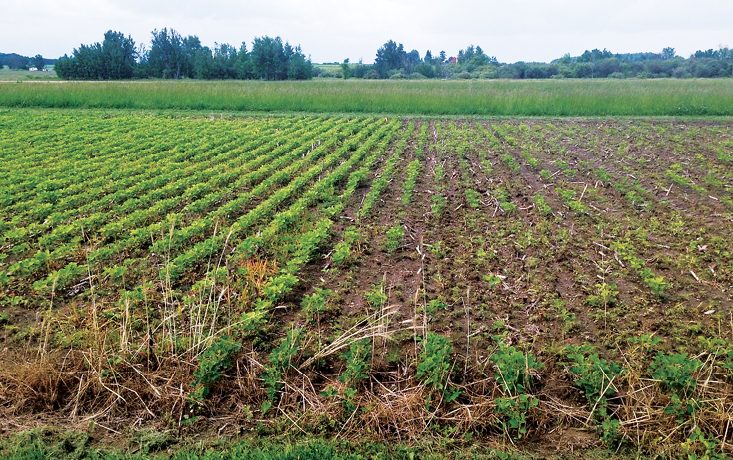By: Sue Roesler
With a stretch of warm weather in mid-June, producers mostly finished seeding soybeans and sunflowers. The wet planting season saw many acres of prevent plant in the central and east side of the state.
For the first time in two and a half years, there are no areas of dryness in North Dakota, according to the U.S. Drought Monitor. Light rain showers continue to come through the state.
Katelyn Landeis, NDSU Extension Agent in Grand Forks County, said soybeans and corn are coming up, although they are shorter than in a typical year.
“The crops look okay. A lot of soybeans and corn are small, however,” Landeis said.
Some fields, especially those that were no tilled, are still wet and muddy. Many low-lying areas are wet, but the weekend of June 18-19 was sunny and warm, and helped with drying these areas.
It allowed some producers who had a few acres left to plant to finish up seeding.
Producers are now turning to planting prevent plant acres if they can get into the fields and plant a cover crop to protect the soil.
“There are new rules with prevent plant, but most producers are planning to plant, if they haven’t already, a warm season cover crop like millet or sorghum or maybe, turnips and radishes that could take up some water,” she said.
Rachel Wald, NDSU Extension agent in McHenry County in the north central region of the state, said most everyone has planted their crop for the season, but there may be some prevent plant in the county.
“The majority of the crops did get planted,” Wald said. “I’ve had insurance agents calling to see what kind of cover crops producers could put in for prevent plant.”
Wald said producers may want to put in cover crop forages on prevent plant acres, and they could be hayed or grazed, but can’t be harvested for seed.
In McHenry County, producers are currently out trying to spray in-between rain showers and wind, with weeds growing. In canola fields, producers are finding flea beetles and are tank mixing herbicide and insecticide.





Post a comment
Report Abusive Comment